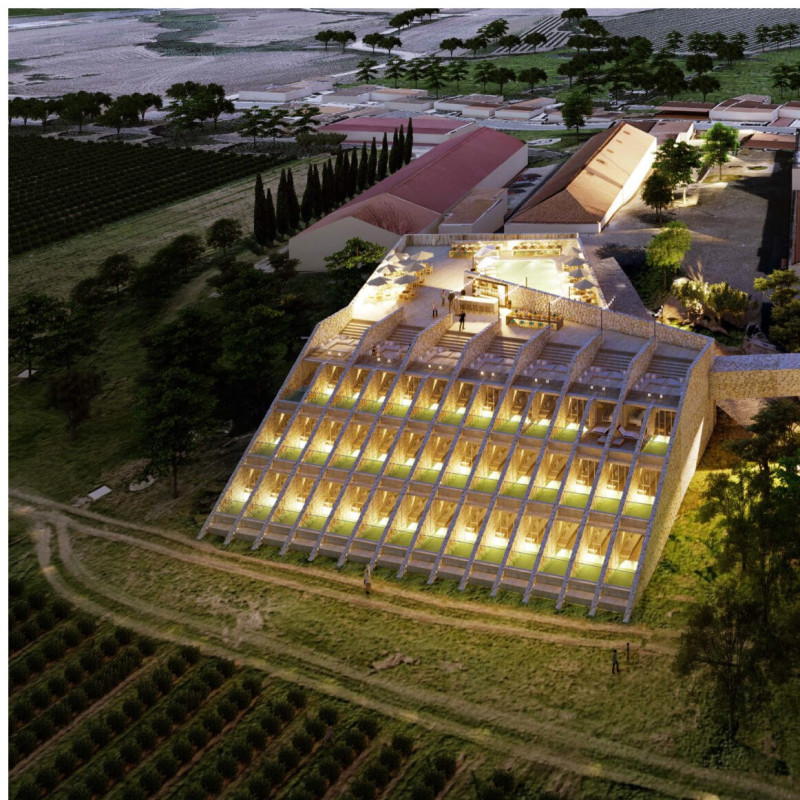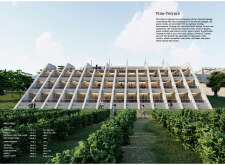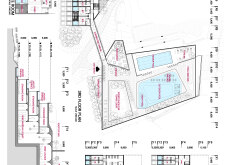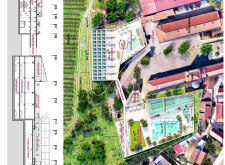5 key facts about this project
Functionally, the Vino-Terrace operates as both a hotel and a cultural center focused on wine. Its unique layout consists of cascaded tiers that carve into the natural topography, allowing for expansive panoramic views of the vineyard. This architectural choice not only maximizes light exposure and air circulation but also evokes a sense of flow that mirrors the undulating landscape. The design ensures that each guest room features its own private terrace, fostering an intimate connection between visitors and the surrounding environment.
Key components of the project include the lobby and check-in area, which provide a welcoming first impression and serve as a hub from which guests access various amenities. Adjacent to this central point is the wine museum lounge, designed as an educational space where guests can learn about the wine-making process and participate in tastings. This integration of experience and learning is a testament to the project's commitment to deepening guests’ understanding of local culture.
The guest accommodations are strategically designed to offer comfort and visual appeal. Rooms come equipped with modern amenities, and the presence of terraces allows guests to unwind outdoors, surrounded by lush grapevines. Special attention is given to the architectural details, such as the choice of materials. Local stone is utilized in the façades to harmonize with the setting, while reinforced concrete forms the structural core, providing support to the cascading design. Expansive glazing is incorporated throughout the project to maximize views and enhance natural light, linking indoor and outdoor spaces seamlessly.
The rooftop bar is one of the project's most distinctive features, providing an elevated space for social interaction, relaxation, and enjoyment of the stunning vineyard vistas. This area is designed to facilitate community engagement, allowing guests to gather and share experiences over a drink in a tranquil and picturesque environment. The combination of communal spaces and private retreat areas reflects an innovative approach to hospitality that prioritizes both social interaction and individual comfort.
Sustainability is a core tenet of the Vino-Terrace project, evidenced by its careful consideration of natural elements in design and construction. The architecture promotes natural ventilation and optimizes its orientation to leverage solar energy, reducing reliance on artificial heating and cooling systems. This thoughtful integration of sustainable practices contributes positively to the ecological footprint of the building.
Accessibility within the project has also been well-considered, ensuring that pathways and access points allow all guests to navigate the site with ease. This inclusive design approach enhances the overall user experience and embraces the idea of connection with nature as a central theme.
In summary, the Vino-Terrace project exemplifies a comprehensive approach to architecture that resonates with its geographical context while serving various functions within the hospitality and cultural spheres. Its thoughtful design encapsulates elements of sustainability, comfort, and community, making it a noteworthy addition to the architectural landscape. For those interested in a deeper understanding of the project, including architectural plans, sections, and designs, further exploration of the presentation will provide valuable insights into the innovative ideas that shaped this unique architectural endeavor.


























